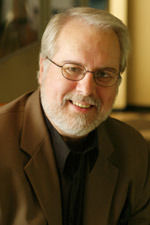 author
authorDiscover the Best Books Written by Christopher Isherwood
Christopher William Bradshaw Isherwood was an Anglo-American novelist, playwright, screenwriter, autobiographer, and diarist. His best-known works include Goodbye to Berlin, a semi-autobiographical novel that inspired the musical Cabaret; A Single Man, adapted as a film by Tom Ford in 2009; and Christopher and His Kind, a memoir which "carried him into the heart of the Gay Liberation movement."
Isherwood was born in 1904 on his family's estate in Cheshire near Stockport in northwest England. He was the elder son of Francis Edward Bradshaw Isherwood, known as Frank, a professional soldier in the York and Lancaster Regiment, and Kathleen Bradshaw Isherwood, nee Machell Smith, the only daughter of a successful wine merchant.
He was the grandson of John Henry Isherwood, squire of Marple Hall and Wyberslegh Hall, Cheshire, and he included among his ancestors the Puritan judge John Bradshaw, who signed the death warrant of King Charles I and served for two years as Lord President of the Council, effectively President of the English Republic.
Isherwood's father, Frank, was educated at the University of Cambridge, and Sandhurst Military Academy, fought in the Boer War, and was killed in the First World War. Isherwood's mother, Kathleen, was, through her mother, a member of the wealthy Greene brewing family of Greene King. Isherwood was a cousin of the novelist Graham Greene, who was also related to the brewing family. Frank and Kathleen christened their first son Christopher William Bradshaw Isherwood, which Isherwood simplified on becoming a United States citizen in 1946.
At Repton, his boarding school in Derbyshire, Isherwood met his lifelong friend Edward Upward, with whom he invented an imaginary English village called Mortmere, as related in his fictional autobiography, Lions and Shadows. He went up to Corpus Christi College, Cambridge, as a history scholar, wrote jokes and limericks on his second-year Tripos, and was asked to leave without a degree in 1925.
At Christmas 1925, he was reintroduced to a prep school friend, W. H. Auden. Through Auden, Isherwood met the younger poet, Stephen Spender, who printed Auden's first collection, Poems. Upward, Isherwood, Auden, and Spender were identified as the most exciting new literary group in England in the 1930s. Auden dubbed Isherwood the novelist in what came to be known as the Auden Group or Auden Generation. With Cecil Day-Lewis and Louis MacNeice, Auden and Spender later attracted the name the MacSpaunday Poets, with which Isherwood is also associated.
After leaving Cambridge, Isherwood worked as a private tutor and later as secretary to a string quartet led by the violinist André Mangeot while he completed his first novel. This was All the Conspirators, published in 1928, about the struggle for self-determination between children and their parents. In October 1928, Isherwood enrolled as a medical student at King's College London, but he left after six months.
In March 1929, Isherwood joined Auden in Berlin, where Auden was spending a post-graduate year. The ten-day visit changed Isherwood's life. He began an affair with a German boy met at a cellar bar called The Cosy Corner, and he was "brought face to face with his tribe" at Magnus Hirschfeld's Institute for Sexual Science. He revisited Berlin in July and moved there in November.
Gerald Heard introduced British writer Aldous Huxley to Vedanta (Hindu-centered philosophy) and meditation. After migrating to America in 1937, Heard and Huxley became Vedantists attending functions at the Vedanta Society of Southern California under the guidance of founder Swami Prabhavananda, a monk of the Ramakrishna Order of India. The Swami initiated both. Heard and Huxley introduced Isherwood to the Swami's Vedanta Society. Over time, Isherwood developed a close friendship with Huxley, with whom he sometimes collaborated. Isherwood became a dedicated Vedantist and was initiated by Prabhavananda, his guru.
The conversion to Vedanta was so intense that Isherwood could not write another novel between 1939–1945, while he immersed himself in the study of the Vedanta Scriptures, even becoming a monk for a time at the Society. For the next 35 years, Isherwood collaborated with the Swami on translations of various Vedanta scriptures, including the Bhagavad Gita, writing articles for the Society's journal and occasionally lecturing at the Hollywood and Santa Barbara temples. For many years he would come to the Hollywood temple on Wednesday nights to read the Gospel of Ramakrishna for half an hour, then the Swami would take questions from the devotees.
From 1950 to 1978, Isherwood gave 53 lectures at the Hollywood and Santa Barbara Vedanta Temples. He mentions in his diaries and the book, My Guru and His Disciple that he feels unqualified to preach. Hence, most of his lectures were readings of papers written by others, primarily Swami Vivekananda. There were a few original lectures, including, Who Is Ramakrishna, The Writer and Vedanta, and a study on Girish Chandra Ghosh, a householder disciple of Ramakrishna.
Isherwood was also very involved in producing the bi-monthly journal of the Vedanta Society of Southern California, Vedanta, and the West. From 1943 to 1945, he was Managing Editor, and from 1951 to 1962, he was an Editorial Advisor with Aldous Huxley, Gerald Heard, and John van Druten from 1951 to 1958. From 1949 to 1969, he wrote 40 articles for the journal.
Best author’s book



Written books
1



















